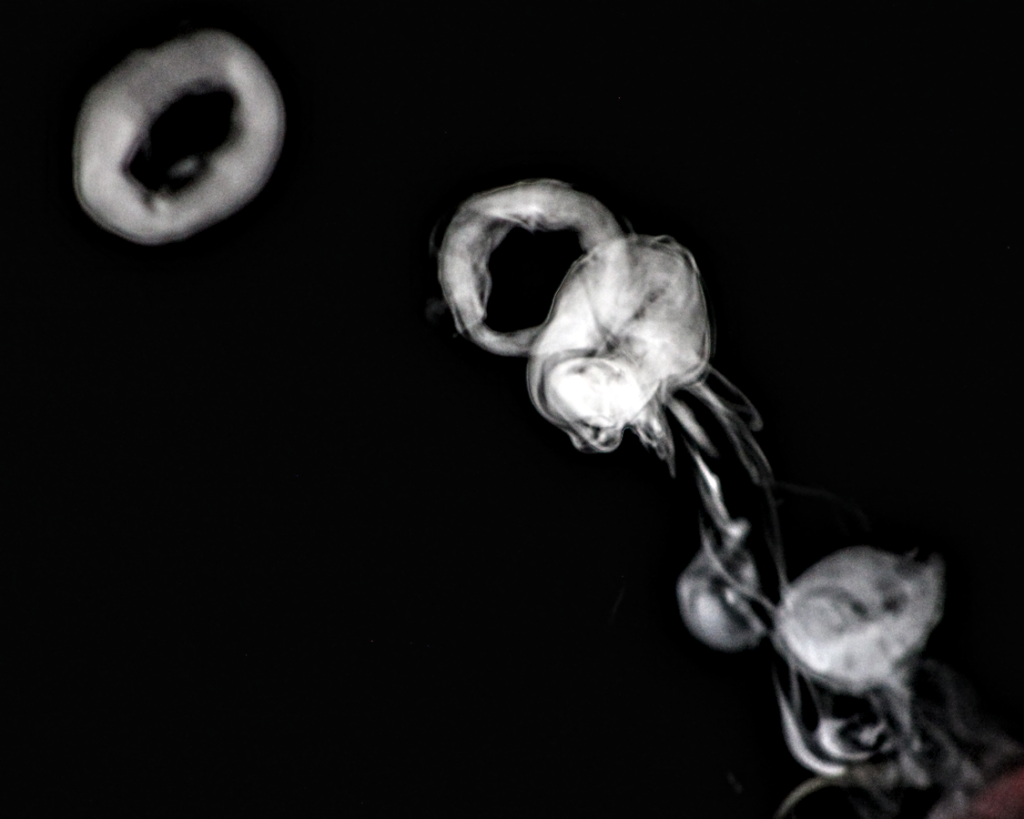Vortex rings generated by dry ice sublimating in water within a plastic cup, discharged through a quarter-inch hole illuminated by an LED. Some rings are fully developed while others are captured in the process of formation.
Vortex Rings – Andrew Mord
Categories
Flow Vis Guidebook
- Introduction to the Guidebook
- Overview 1: Phenomena. Why Does It Look Like That?
- Overview 2: Visualization Techniques
- Overview 3: Lighting
- Overview 4 - Photography A: Composition and Studio Workflow
- Overview 4 - Photography B: Cameras
- Overview 4 - Photography C: Lenses - Focal Length
- Overview 4 - Photography C: Lenses - Aperture and DOF
- Overview 4: Photography D: Exposure
- Overview 4 - Photography E - Resolution
- Overview 5 - Post-Processing
- Clouds 1: Names
- Clouds 2: Why Are There Clouds? Lift Mechanism 1: Instability
- Clouds 3: Skew - T and Instability
- Clouds 4: Clouds in Unstable Atmosphere
- Clouds 5: Lift Mechanism 2 - Orographics
- Clouds 6: Lift Mechanism 3 - Weather Systems
- Boundary Techniques - Introduction
- Dye Techniques 1 - Do Not Disturb
- Dye Techniques 2 - High Visibility
- Dye Techniques 3 - Light Emitting Fluids
- Refractive Index Techniques 1: Liquid Surfaces
- Refractive Index Techniques 2: Shadowgraphy and Schlieren
- Particles 1- Physics: Flow and Light
- Particles 2: Aerosols
- Particles 3: In Water
- Particles 4 -Dilute Particle Techniques
- Art and Science
- TOC and Zotpress test
- Photons, Wavelength and Color


5 Comments. Leave new
This looks like a chain of ghostly bubbles drifting upward, super cool! A tiny bit more brightness might reveal even more texture.
Statement of meaning: I really liked how you captured the path of the vortex rings, and how the center of the image is the most in focus.
Its really cool that you captured multiple vortex rings. It shows the progression of the vortex rings in time and space which informs vortex formation and propagation.
The multiple vortexes really add a lot of motion to the image, really highlights the changes that the vortexes experience over time.
I like that multiple rings at different stages of formation are shown and that the depth of field makes the differences in depth apparent.